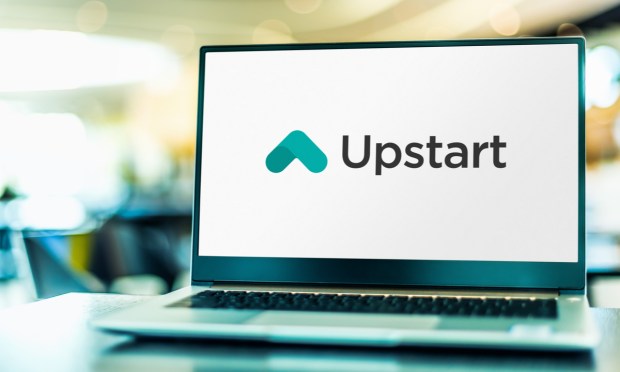
If you are in the business of providing loans, there will always be a demand for your product.
As for the customers that need to be served, the total addressable market (TAM) for annual loan originations is a whopping $3 trillion.
Artificial intelligence (AI)-powered lending platform Upstart has originated $38 billion in loans across its 3 million customers — leaving lots of room to grow.
That’s why, on Tuesday’s (May 7) first quarter 2024 earnings call, Upstart executives stressed to investors that the company’s future is bright.
“The consequence of growing consumption with flat personal income rates” are driving the need for lending solutions like Upstart’s, executives told investors on Tuesday.
“We continue to focus on improving our efficiency and financial performance while investing responsibly for the long-term,” said Dave Girouard, CEO at Upstart, in a release. “As a result, we anticipate a return to sequential growth in the second half of the year and positive EBITDA by the end of the year, even in the current credit environment.”
Upstart’s latest earnings beat Wall Street expectations, but its forecast for the current quarter came up short compared against market sentiment.
Upstart’s stock price was trading down around 5% on news of its earnings, as of market close, and was trading down double-digits after hours.
Read more: Inflation and Pinched Consumer Wallets Dominate Q1 Earnings
During the most recent quarter, 119,380 loans were originated using Upstart, totaling $1.1 billion across the company’s platform and up 13% from the same quarter of the prior year. Conversion on rate requests was 14% in the first quarter of 2024, up from 8% in the same quarter of the prior year.
Upstart reported that 90% of loans were fully automated — a new record — and that 91% of automated approvals converted to funded loans, which per the company’s materials is 3x the conversion rate of non-automated loans.
Average loan size was down, driven by “robust growth” in smaller dollar loans, executives noted.
Upstart’s revenue rose to $128 million, up from $103 million the same time last year, beating both Wall Street estimates and the company’s own.
“We continue to benefit from loan processing automation,” Sanjay Datta, Upstart’s CFO, said. “The models are getting better, which means better separation.”
Upstart’s AI and machine learning lending solutions are powered by more than 1,600 variables, with Upstart models trained on more than 65 million repayment events and adding an average of 82,000 new repayments each business day, per the company’s materials.
With Upstart’s AI lending marketplace, the company claims that lenders can approve more borrowers at lower APRs, while simultaneously delivering a digital-first experience customers demand.
Read more: Upstart Unveils Custom Loan Tool for Banks and CUs
Upstart builds AI models for consumer lending and partners with financial institutions to offer the loans and to sell them to other institutional investors.
The company counts more than a hundred banks and credit unions as partners, up from 10 at its December 2020 IPO, per its materials.
As reported here on March 21, Florida-based Liberty Savings Bank partnered with Upstart to provide personal loans.
And PYMNTS looked at the roles personalization and customization play in credit union loan offerings last year in a conversation with Denise Stevens, senior vice president and chief product and digital officer at PSCU/Co-op Solutions.
She said that these two factors are critical to offering the right credit products to members, making it possible to approve loans that might be rejected by traditional banks.
“When you look beyond the traditional ways used in this industry to approve consumers, credit unions really can get creative in that area, and they usually do,” Stevens said. “[Credit unions] need to be very focused on the innovation side of lending to ensure they have a large reach.”
Over half (56%) of consumers had to deal with at least one unexpected expense in the last 12 months, most often an unforeseen medical bill or unplanned home repair, according to “The Credit Accessibility Series: Unexpected Expenses and the Demand for External Financing Solutions,” a PYMNTS Intelligence and Sezzle collaboration.